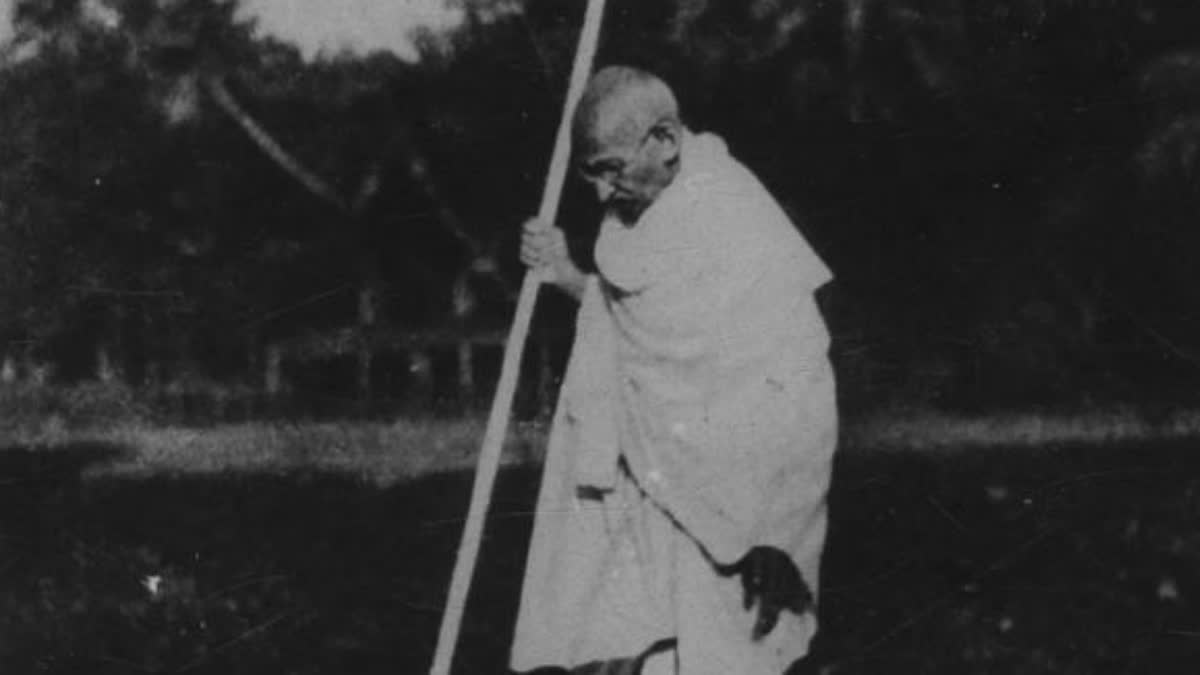Hyderabad: No other political leader in history has probably had as much influence on popular culture — films, songs, music videos, animation shows, graphic novels — as Mohandas Karamchand Gandhi. He has appeared in at least 30 films, ranging from the American feature documentary Mahatma Gandhi: Twentieth-century Prophet in 1953 to Gandhi Godse Ek Yudh (2023), written and directed by Rajkumar Santoshi.
There have been 17 actors who have played him on screen from J.S. Casshyap, Ben Kingsley, Sam Dastor, Jay Levey, Yashwant Satvik, Annu Kapur, Rajit Kapur, Mohan Gokhale, Naseeruddin Shah, Surendra Rajan, Mohan Jhangiani, Dilip Prabhavalkar, Dr Shikaripura Krishnamurthy to Avijit Datta. Surendra Rajan has played Gandhi six times, in Veer Savarkar (2001), The Legend of Bhagat Singh (2002), Netaji Subhash Chandra Bose: The Forgotten Hero (2005), The Last Days of the Raj (2007), Gandhi: The Silent Gun (2012), and Srijit Mukherji's Gumnaami (2019).
Gandhi's life and beliefs have had long-lasting impressions, particularly on Hindi cinema. Almost every film that depicts a police station features his portrait as part of the background decor. Rajkumar Hirani's Lage Raho Munna Bhai (2006) is possibly the one film that epitomises the Mahatma's enduring legacy and was essential in reintroducing him in popular discourse. The film's creators had a goonda dreaming about the Mahatma, who encourages him for doing "Gandhigiri" instead of gundagiri as a technique to get his way.
Despite such an influence, the man himself did not enjoy watching films. He was passionate about many topics, however, films were an exception. He, in his lifetime, refused to accept the idea that films can be used to teach morals. He also felt uneasy sitting in a "closed theater with no ventilation" much alone the other components of the flicks. He claimed he would like to open spinning theatres instead of film theatres after criticising dazzling photos of heroes and heroines in publications.
However the Father of the Nation ended up watching two films during his lifetime and both occurred in quick succession. Mission to Moscow (1943) was the first and following this, acclaimed artist and art director Kanu Desai insisted on showing Gandhi the Hindi film Ram Rajya. Gandhi reportedly stated, "I will have to see an Indian film as I made the mistake of watching an English one." The show was scheduled for June 2, 1944.
Even though he was opposed to films, Gandhi was not opposed to the performing arts. He appreciated good music. Had he been alive today, he would be amused by the range of films depicting him.



